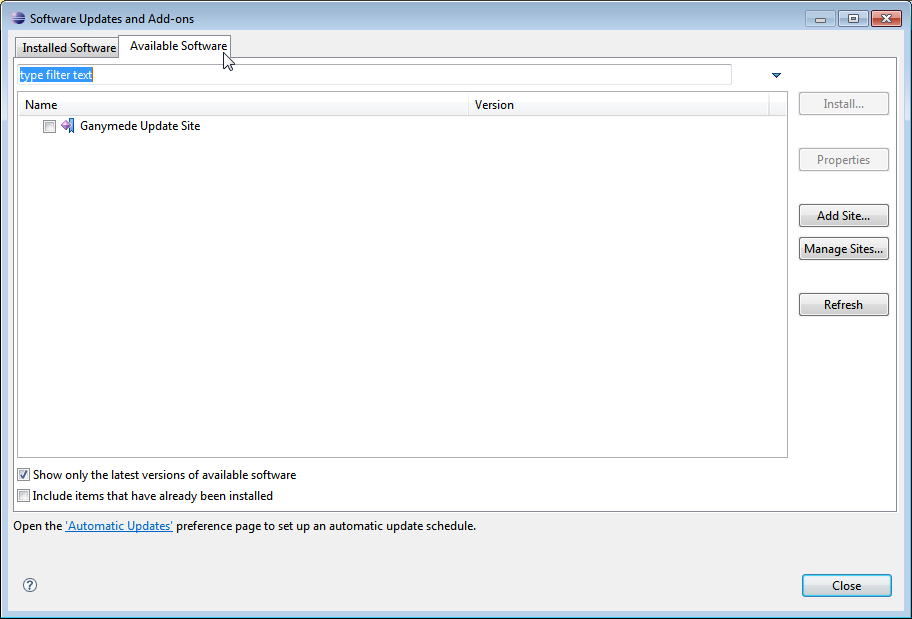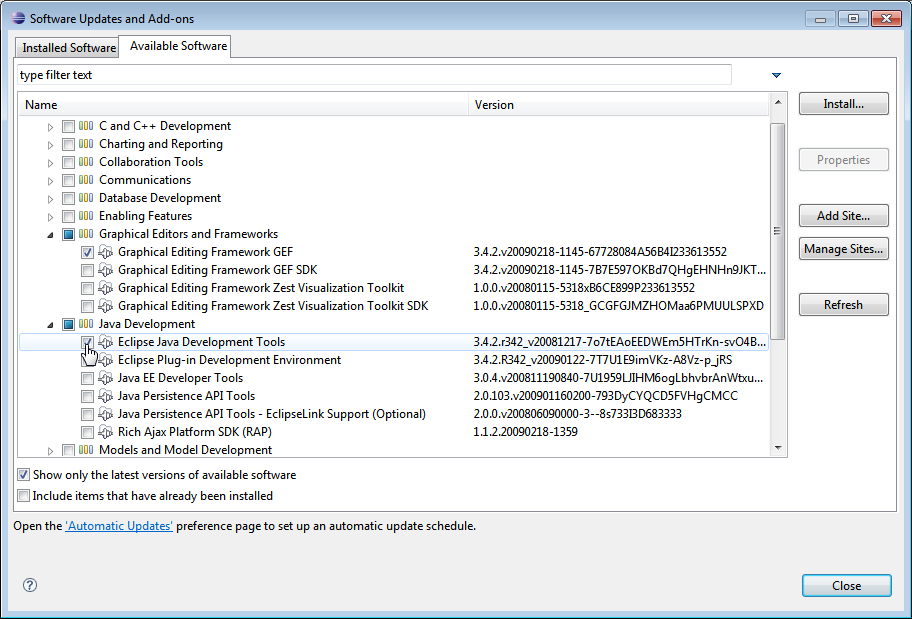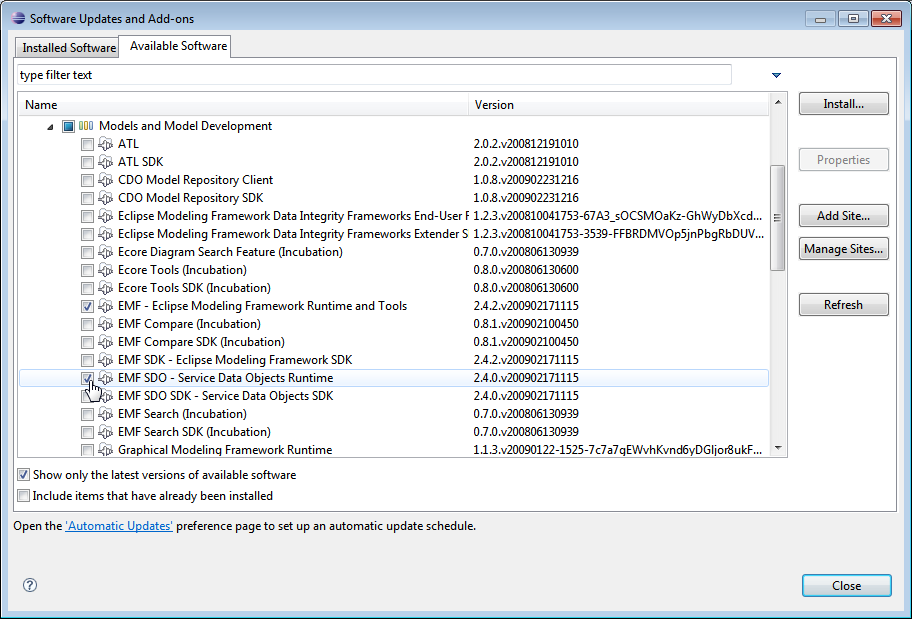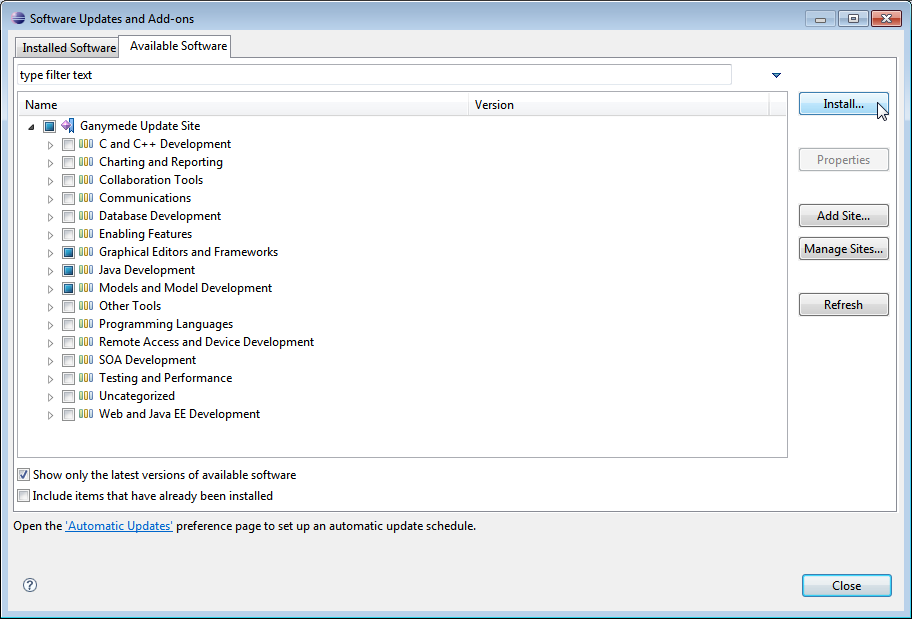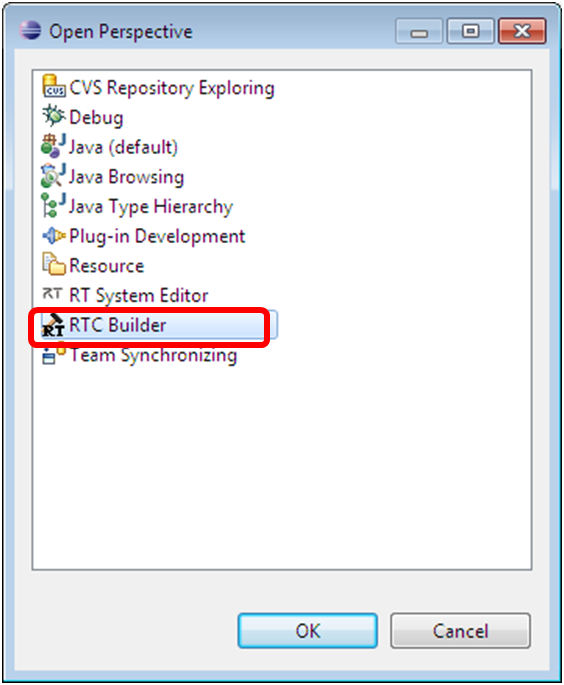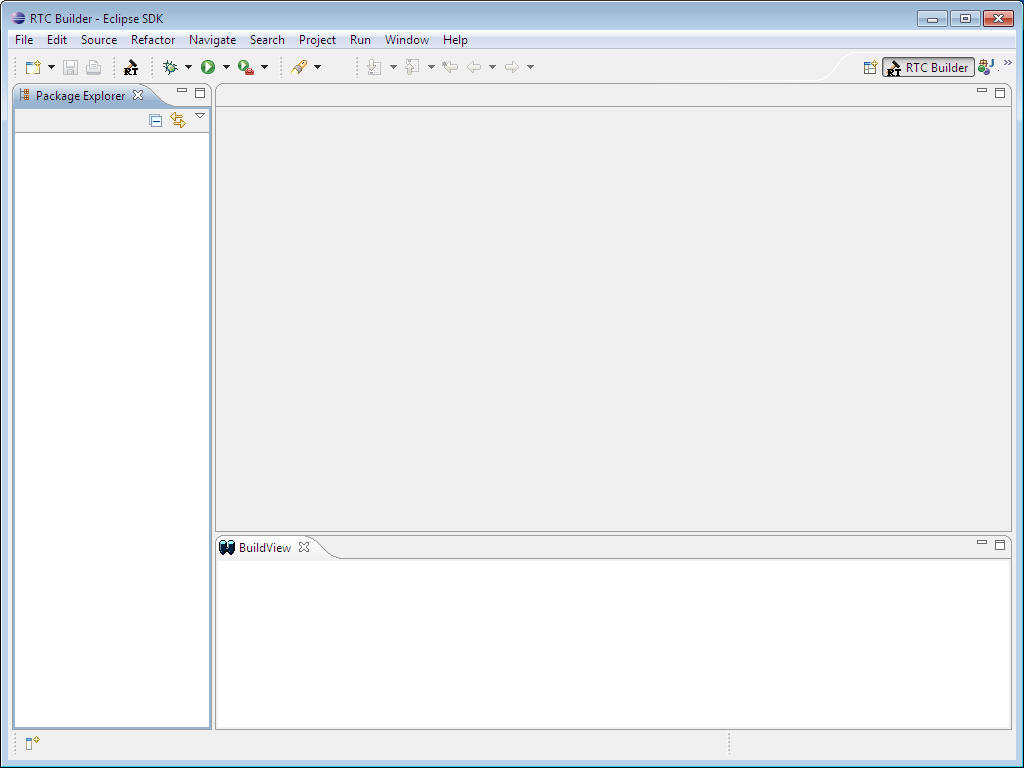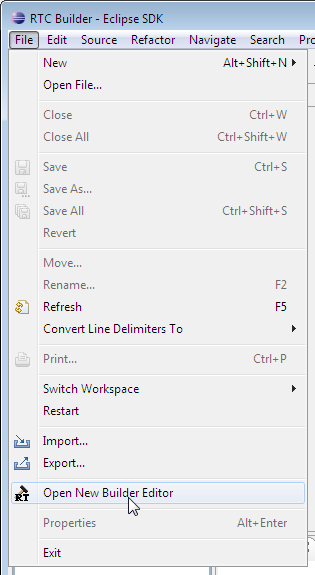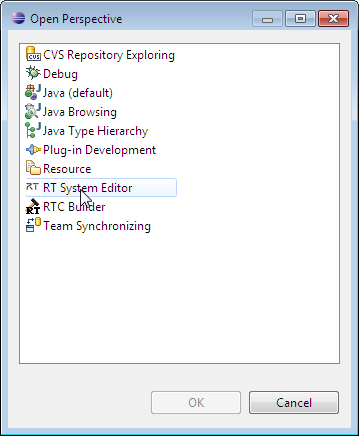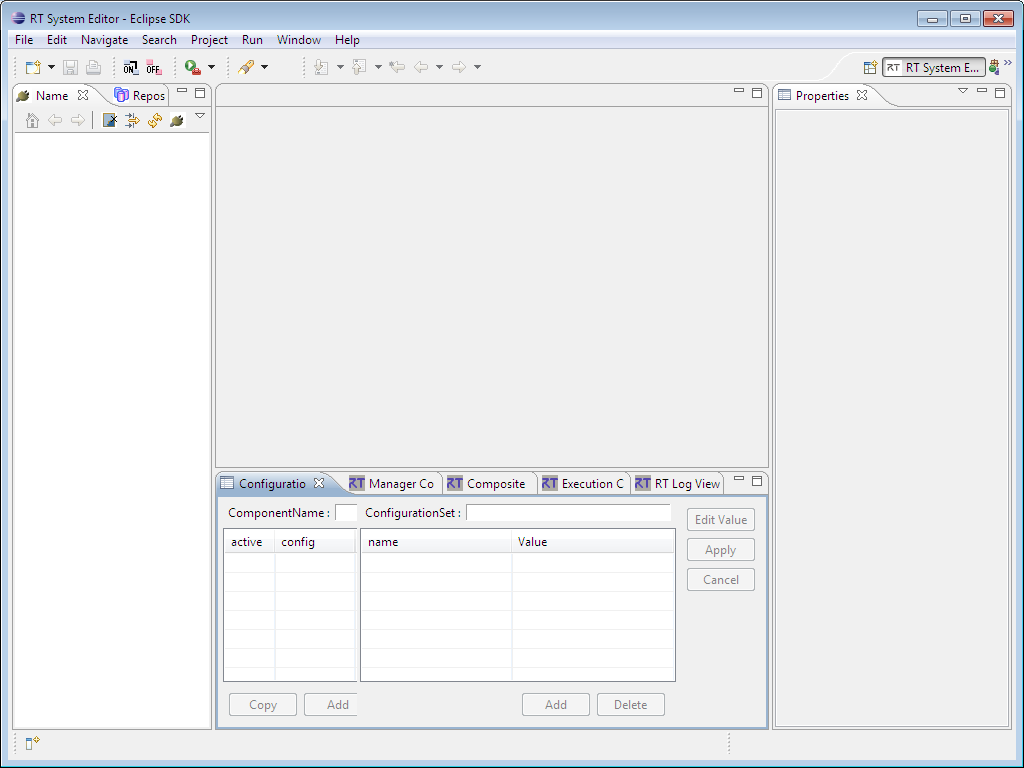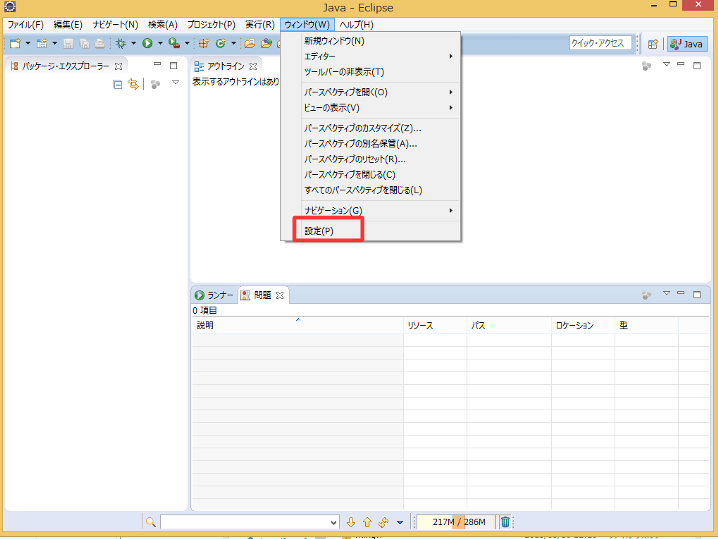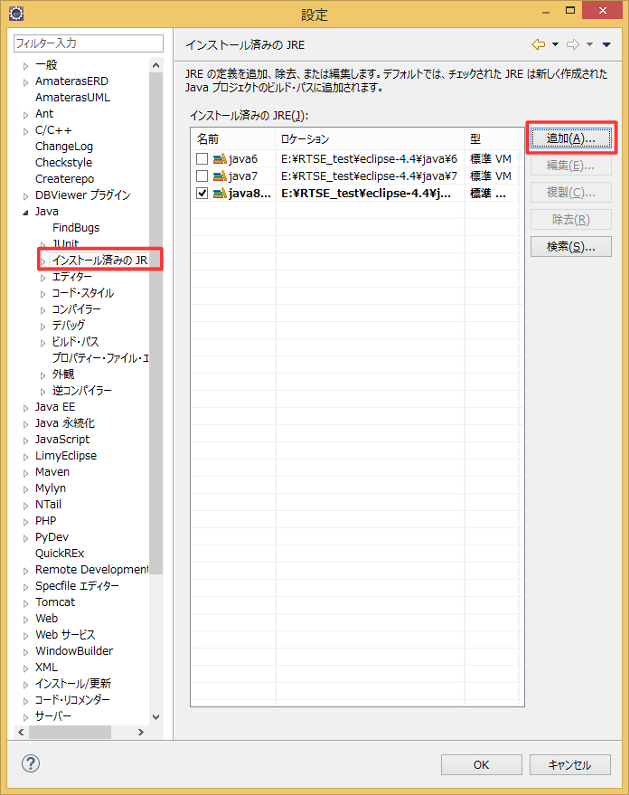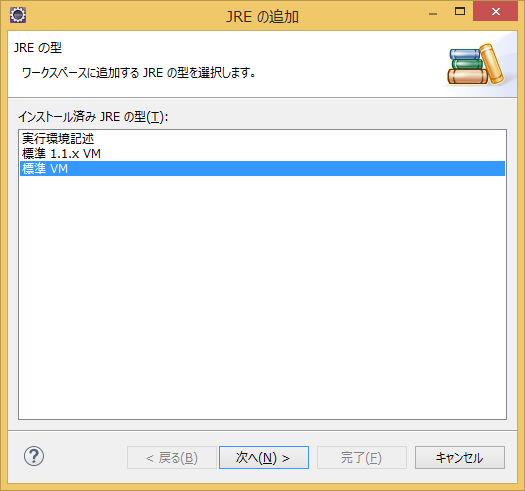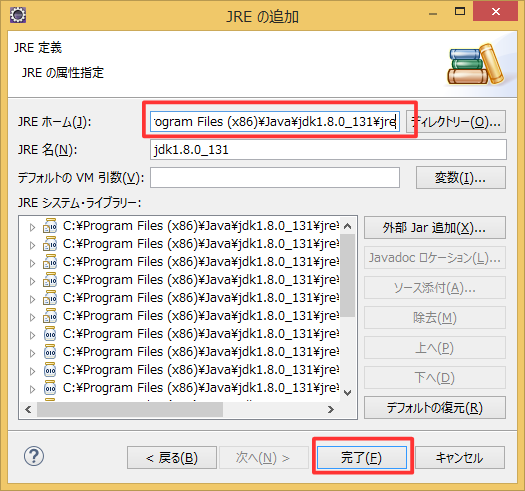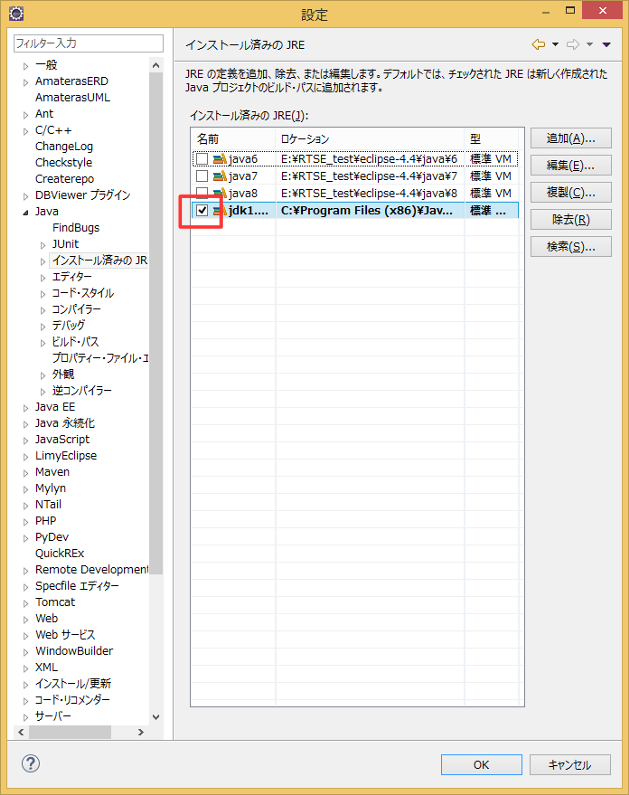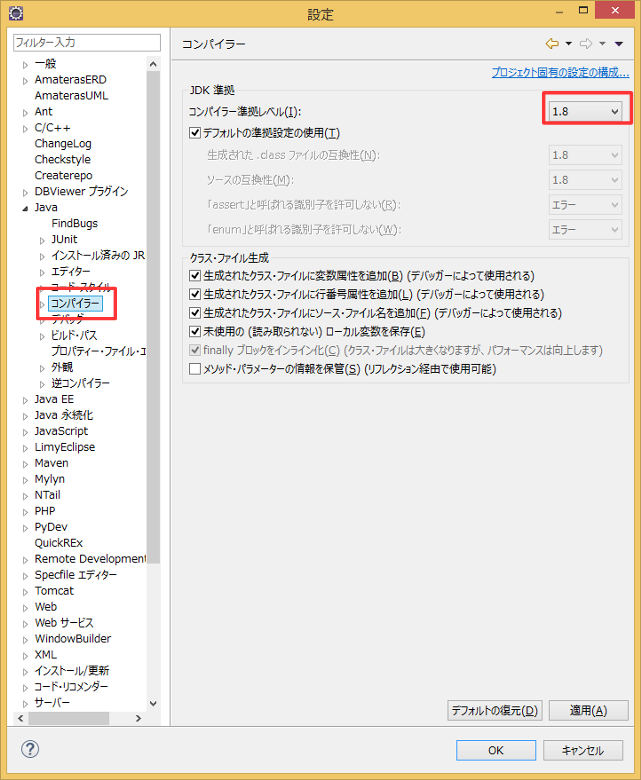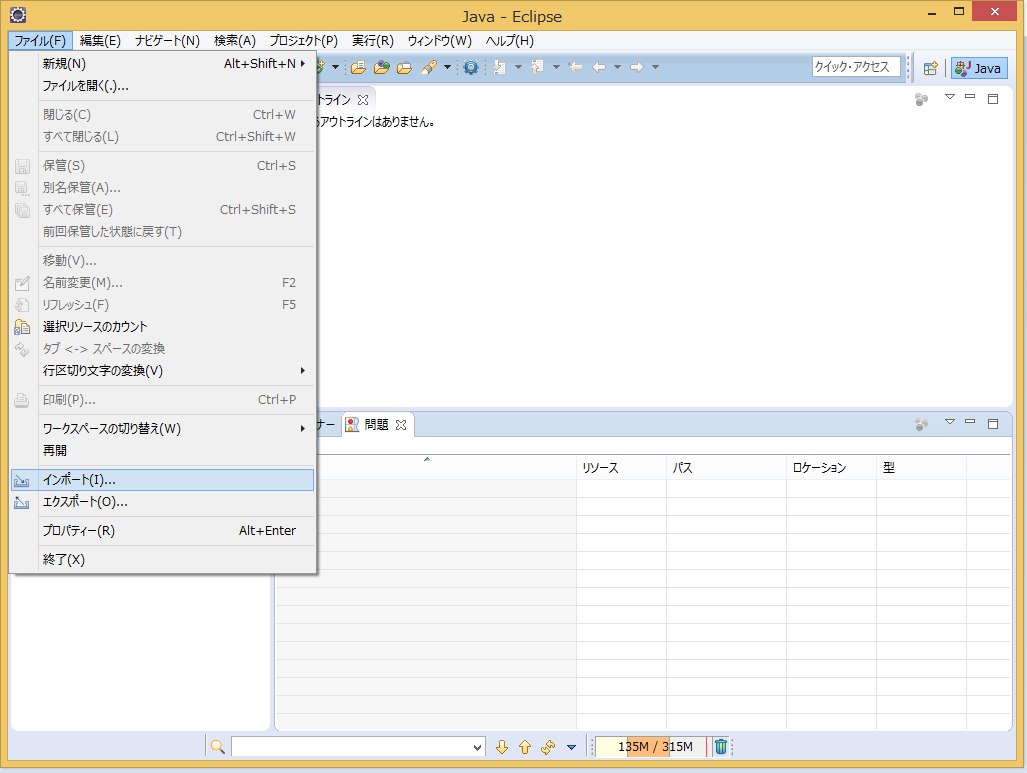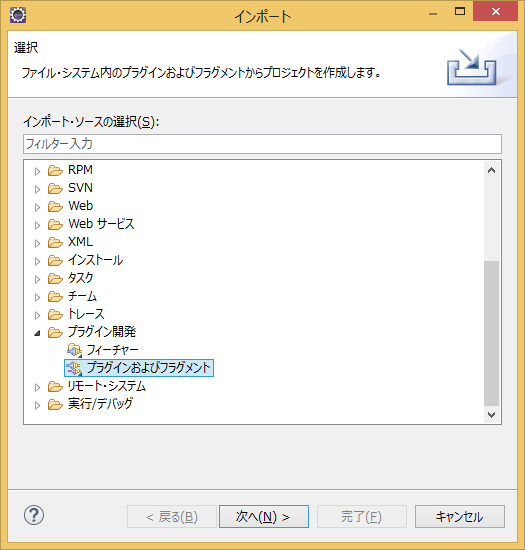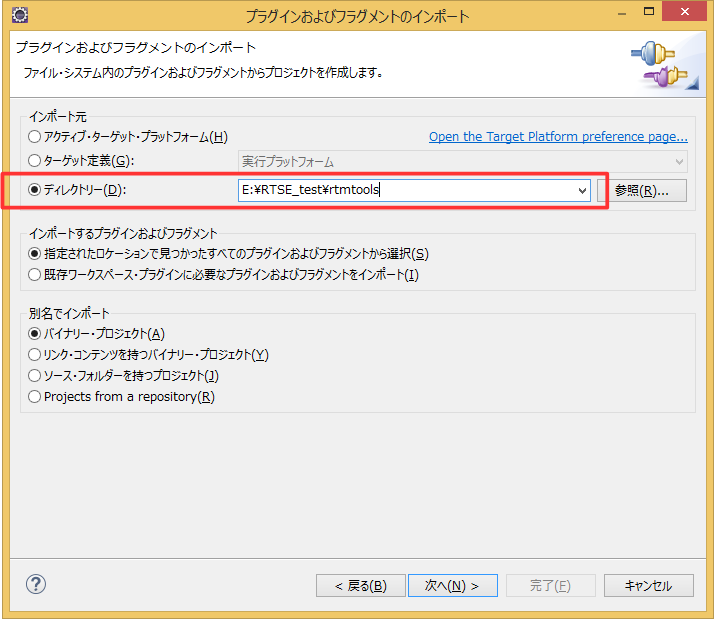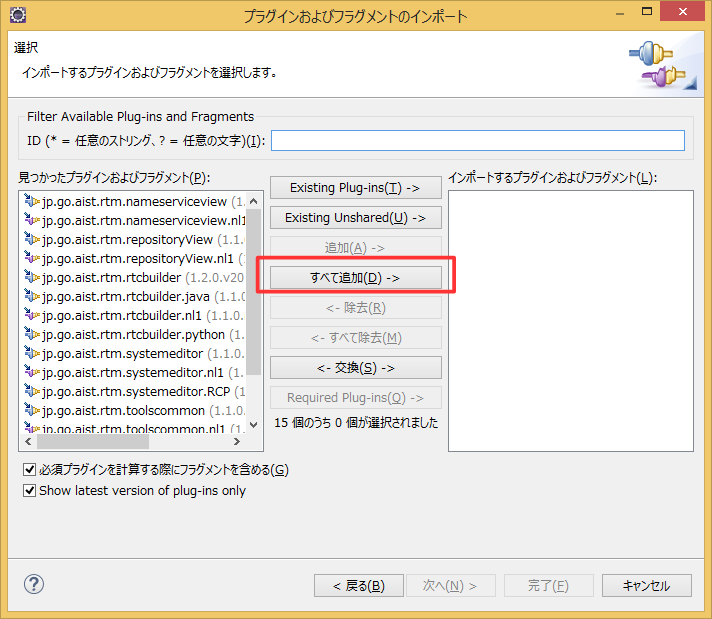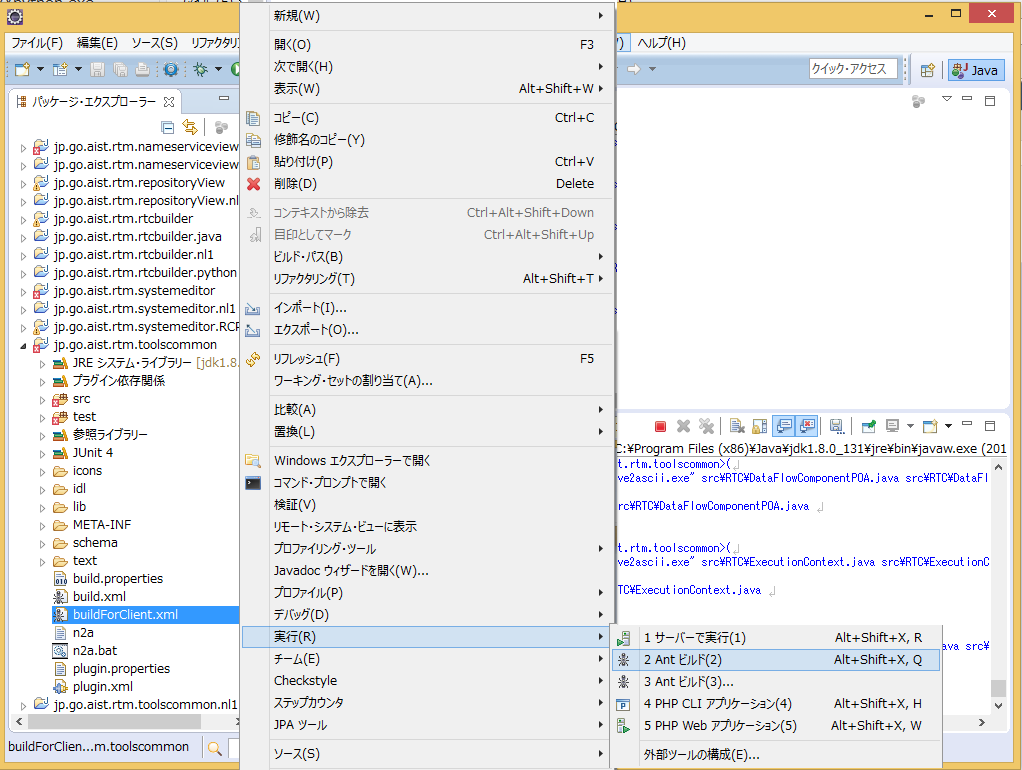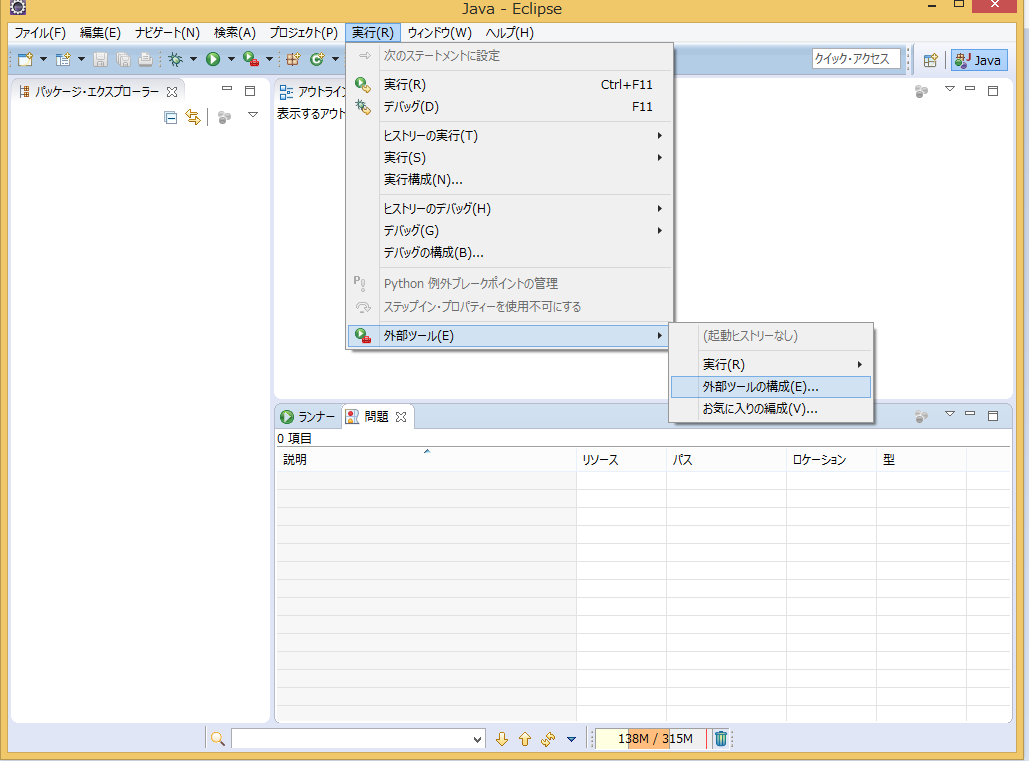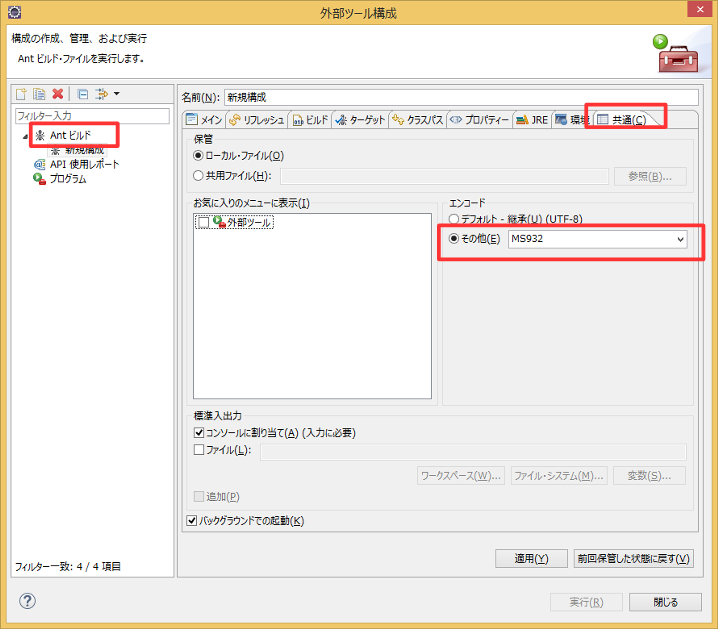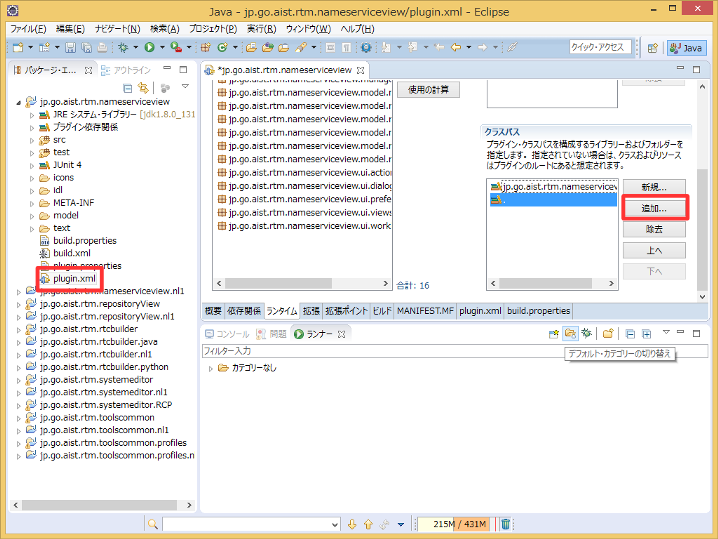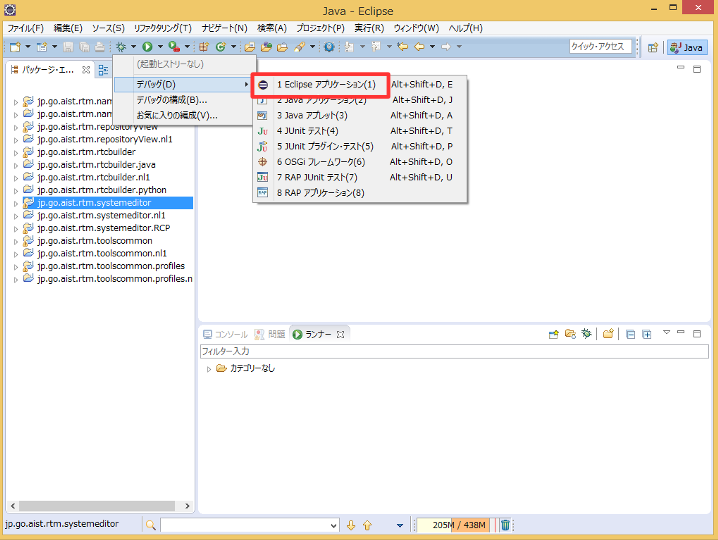Install Eclipse tools for OpenRTM-aist 1.1
We prepared an installation package for UNIX and Windows here. We prepared packages for UNIX and Windows including RTSystemEditor and RTCBuilder, all containing (Eclipse 4.4.2 + Japaneseization + RTSystemEditor + GEF + EMF + XSD + RTCBuilder). It is very easy to install, so please use those who would like to try to move them.
Java Development Kit 7 (JDK) is required, please install in advance. Eclipse archive (package file in compressed state) has over 100 MB. After downloading, please unpack the archive to the directory you want to install. There is no installer in Eclipse in particular, you can just use the archive just expand it.
About Eclipse
Eclipse is an open-source Integrated Development Environment framework developed by the Eclipse Foundation for developing in Java and other languages. Eclipse is, at its core, a platform for plugins to execute in, combining a wide variety of plugins to create various development environments. Even the default Java development environment is implemented as a plugin, and development environments for other languages can be created and expanded using other plugins.
The characteristics of Eclipse include:
- Easily extensible using plugins. Plugins can also cooperate.
- Using the Rich Client Platform (RCP) structure, plugins can function in a standalone mode.
- Because it is written in Java, it functions on many platforms. These characteristics are very useful for constructing a robot-oriented development environment. For this reason, it was selected as the platform for the RT Middleware tools.
And so on. Judging that these Eclipse features are useful for constructing an integrated development environment for robot, we chose Eclipse as a platform for tools of RT middleware.
To use RTCBuilder and RTSystemEditor you need to install Eclipse. Regarding the installation method of Eclipse,Etc. will be helpful.
Installing the Java Runtime Environment (JRE)
Since Eclipse is a Java application, you need to install Oracle's Java execution environment ((JRE: Java Runtime Environment). Installing JRE is not necessary in an environment where JDK (Java development environment, however, 1.6 or higher) is already installed. (RTCBuilder requires JDK instead of JRE to generate Java code.)After downloading please install according to the instructions of the installer.
JDK installation:
⇒ Java Development Kit 7
reference: → cool! Simple way to apply Oracle's Java (JRE) to Eclipse in a UNIX environment
Installing Eclipse
Download an Eclipse archive suitable for your platform from the Eclipse Download Site and install it. The recommended version for RTSystemEditor is Eclipse v3.4.2 Reference:- ''FAQ:'' Method of starting Eclipse
- Ubuntu 8.04, Ubuntu 9. 10. It is reported that Eclipse 3.4.2 for Linux does not work.
- For Ubuntu 8.04, update xulrunniner as apt-get install xulrunner-1.9 .
- For Ubuntu 9.10, please use the following method or use Eclipse3.3 or 3.5.
$ su # vi /etc/apt/source.list This line is added. → deb http://jp.archive.ubuntu.com/ubuntu/ jaunty main restricted # apt-get update # apt-get install xulrunner-1.9 # dpkg -l |grep xulrunner-1.9 ii xulrunner-1.9 1.9.0.8+nobinonly-0ubuntu2 XUL + XPCOM application runner ii xulrunner-1.9.1 1.9.1.7+nobinonly-0ubuntu0.9.10.1 XUL + XPCOM application runner ii xulrunner-1.9.1-gnome-support 1.9.1.7+nobinonly-0ubuntu0.9.10.1 Support for GNOME in xulrunner-1.9.1 applica 1.9.1 and 1.9 live together. # exit $ export GDK_NATIVE_WINDOWS=1 $ ./eclipse
#/bin/sh export GDK_NATIVE_WINDOWS=1 ./eclipse -vmargs -Dorg.eclipse.swt.browser.XULRunnerPath=/usr/lib/xulrunner-1.9.1.8/xulrunner
Installing plugins
RT System Editor uses the following Eclipse plugins.- EMF (Eclipse Modeling Framework)
- GEF (Graphical Editing Framework)
- XSD (XML Schema Infoset Model)
- SDO (EMF Service Data Objects)
- JDT (Eclipse Java development tools)
- From the Eclipse menu, choose Help> Software Update.
- This software update and add-in window will be displayed, so select the Available Software tab.
- Select Genymede Update Site and select the plug-in.
- Click [Installation]
- The plugins will be downloaded and installed automatically.
Terminate Eclipse once after installation.
Installing RTCBuilder
RTCBuilder
RTCBuilder is a template generator tool for RT Components. It generates custom templates based on user-configured parameters. RTCBuilder operates on top of Eclipse and interacts seamlessly and intuitively with other Eclipse plugins. Although RTCBuilder can be used even if RTSystemEditor is not installed, if it is, RTCBuilder's menus will be integrated with those of RTSystemEditor. This document is written assuming RTSystemEditor is installed.
Functional Overview
| Function | Overview |
| RTC Profile Editor | Edit the RTC specification based profile, data port definitions, service port definitions, configuration parameter definitions, and other profile extensions. |
| Build view | Graphically display the RT Component being edited, including its data ports, service ports, service interfaces. |
| Repository view | Display information on a selected RT Repository. |
Operating Environment
The following must be installed for RTCBuilder to function.
| Software | Remarks |
| Java Development Kit 6 | Note: Java1.5 (5.0) is not suitable. |
| Eclipse version 3.4.2 or above http://www.eclipse.org/downloads/index.php http://archive.eclipse.org/eclipse/downloads/index.php |
Eclipse itself |
| Eclipse EMF version 2.2 or above (SDO, XSD included) | Eclipse plugin required by RTC Builder Note: be sure to use versions that match your Eclipse version. |
| Eclipse GEF version 3.2 or above (Draw2D included) | Eclipse plugin required by RTC Builder Note: be sure to use versions that match your Eclipse version. |
If you will be generating components for C++ or Python, you will need the following as well:
| Software | Remarks |
| Eclipse CDT | C++ development environment |
| Pydev for Eclipse | Python development environment |
Install RTCBuilder
Because RTCBuilder is an Eclipse plugin, it requires Eclipse to be installed. Eclipse is written in Java, so it in turn requires a Java environment to be set up before it can be installed (such as the JDK).- Please refer to "Installation of Java execution environment (JRE) of Eclipse" for the installation of the Java execution environment.
- Please refer to "Installation of Eclipse of Eclipse" for the installation of Eclipse.
Installing and Starting RTCBuilder
Download the RTCBuilder plugin and copy the jar files into the Eclipse plugin directory. This is a directory called plugin below the'eclipse directory in the location you extracted the Eclipse archive to. Start Eclipse and select [Open Perspective] > [Other] from the Window menu. The perspective selection dialog will be displayed.
Select RTC Builder from the list to open its perspective.
Click the [Open New RTC Builder Editor] button in the toolbar, or select [Open New Builder Editor] from the File menu to begin editing a new component.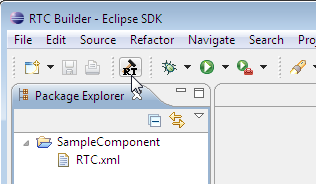
reference:''FAQ:'' How to start Eclipse
Installing RTSystemEditor
RTSystemEditor
RTSystemEditor is one of the OpenRTM-aist development tools. It allows RT Components to be manipulated in real-time using a graphical interface. It is implemented as a plugin for the Eclipse IDE, allowing seamless operation from within Eclipse and integration with existing plugins.
Functional Overview
The functions offered by RTSystemEditor are given below.
| Function | Overview |
| Display and edit component configurations | The configuration profiles of the selected component is displayed in the Configuration View, and can be edited there. |
| Change component behaviour | Select components and change their behaviour (active state, etc). |
| Combine components | Retrieve components from a repository or load them from the file system and combine them together into a system using the System Editor. |
| Save and open systems | Save the contents of the System Editor and load it again at a later date. |
| Restore systems | Use saved System Editor states to restore a system of connected RT Components. |
Operating Environment
The following must be installed for RTSystemEditor to function.
| Software | Remarks |
| Java Development Kit 6 | Note: Java1.5 (5.0) is not suitable. |
| Eclipse 3.4.2 | Eclipse itself |
| Eclipse EMF 2.2.4 EMF+SDO Runtime and XSD Runtime | Eclipse plugin required by RT System Editor |
| Eclipse GEF 3.2.2 | Eclipse plugin required by RT System Editor |
Installing RTSystemEditor
Because RTSystemEditor is an Eclipse plugin, it requires Eclipse to be installed. Eclipse is written in Java, so it in turn requires a Java environment to be set up before it can be installed (such as the JDK).
- Please refer to "Installation of Java execution environment (JRE) of Eclipse" for the installation of the Java execution environment.
- Please refer to "Installation of Eclipse of Eclipse" for the installation of Eclipse.
Installation
Installing RT System Editor
Start Eclipse and select Open Perspective->Other from the Window menu. The perspective selection dialog will be displayed.
Select RTSystemEditor from the list to open its perspective.
If RTSystemEditor is not available in the list of perspectives, check that EMF, GEF and XSD are all correctly installed, and that the RTSystemEditor plugin is in the correct directory.
Restart Eclipse
After confirming that RTSystemEditor starts, restart Eclipse using the same workspace. RTSystemEditor should be displayed as it was when you exited Eclipse.
reference:''FAQ:'' How to start EclipseDebugging RTSystemEditor, RTCBuilder
This page describes the debugging procedure of RTSystemEditor and RTCBuilder.
Obtain required software
eclipse
RTSystemEditor, RTCBuilder will work as eclipse plugin. Please download eclipse from the following site. At that time please select Ultimate Full Edision for package. Standard Edition requires plug-in development environment to be installed manually.
JDK
Since you need JRE 1.8 or higher, please obtain and install the latest version of JDK installer from below.
RTSystemEditor, RTCBuilder source code
Please check out below from TortoiseSVN etc.
Build
Please execute eclipse.exe.
JRE setting
Set up the JRE to use.
In the JRE path (eg C:\Program Files (x86)\Java\jdk1.8.0_131\jre), Select "Add" → "Standard VM" under "Window" → "Settings" → "Java" → "Installed JRE" and add a check
Setting compiler compliance level
Since the compiler compliance level may be set to 1.6 in the initial state, please set the compiler compliance level to 1.8 with "Window" → "Setting" → "Java" → "compiler".
Import RTSystemEditor, RTCBuilder project
RT System Editor, RTC Builder into eclipse of development environment. Select "File" → "Import" → "Plug-in Development" → "Plug-in and Fragment", then press "Next".
Please turn on "Directory" of "Import destination", set the directory where rtmtools was checked out, and proceed to the next.
Please select "Add all" and press the completion button.
IDL compilation
Compile the IDL file. In the package explorer, start by right clicking "buildForClient" of jp.go.aist.rtm.toolscommon project and choosing "Execute" → "Ant build".
Garbled characters in Ant build
Double-click "Execution" → "External Tools" → "Configure External Tool" → "Ant Build" and select "Common" tab → "Encode" to Other "MS932" please.
Modifying the classpath
Depending on the environment, the classpath may not be set correctly. In that case, since ClassNotFoundException exception occurs at debugging, please correct all plugin.xml that exists in rtmtools. Double click on plugin.xml in Package Explorer and add "." To "Classpath" from "Runtime" tab. (It can be added to "Bundle-ClassPath" of "MANIFEST.MF")
That's all there is to it.
Debug execution
Debugging starts with "Debug" → "Eclipse application" from the button of the upper bug mark.

